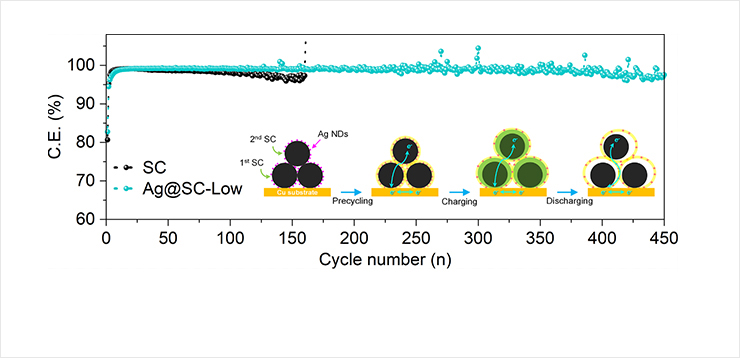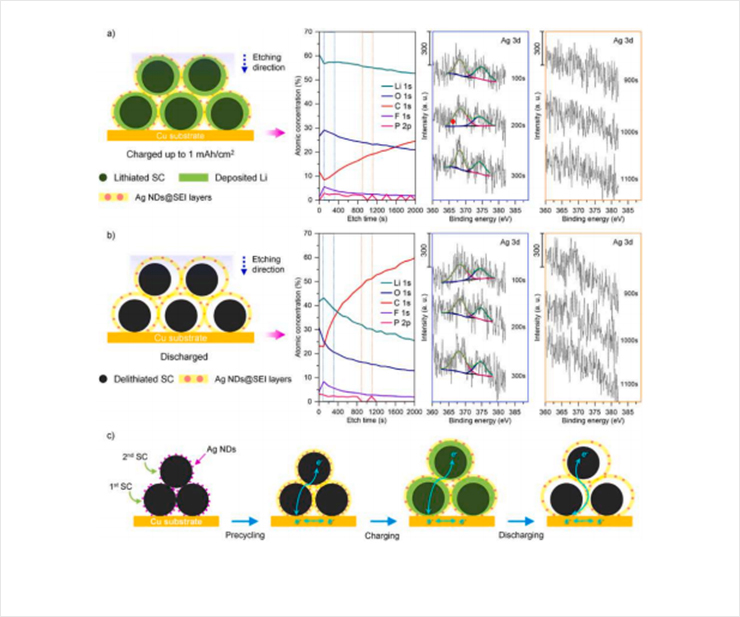Representative Research Publications
Longer-Lasting and More Efficient Lithium Batteries with a Conductive Protective Layer 2025 > Representative Research Publications > Research Results Home
Longer-Lasting and More Efficient Lithium Batteries with a Conductive Protective Layer
- Compos. Pt. B-Eng. / 2025. 3.
- Sungwoo Park (First author), Hae Jin Kim(Corresponding author)
Research Summary
This study, published in Composites Part B (Vol. 292, 2025), proposes a novel interfacial engineering approach to enhance the performance of hybrid Li-ion/metal anodes, which typically suffer from low Coulombic efficiency and poor cycling stability due to internal structural changes and loss of electrical contact during lithium plating and stripping.
The research team developed Ag@SC composites by uniformly decorating spherical carbon (SC) particles with ultra-small silver nanodots (Ag NDs). During electrochemical pre-cycling, these Ag nanodots migrated into the forming SEI (solid electrolyte interphase) layers, creating electrically conductive SEI layers that act as electron-conducting bridges between particles, even after structural deformation.
As a result, the Ag@SC-Low electrode achieved high Coulombic efficiency (~98.8%) and excellent long-term cycling stability (over 450 cycles) in both carbonate- and ether-based electrolytes outperforming conventional carbon-based and non-uniform Ag-decorated electrodes.
Related Figures
 Fig. 1 Ag@SC-Low electrode maintains high Coulombic efficiency over 450 cycles due to the formation of a conductive SEI layer with Ag nanodots.
Fig. 1 Ag@SC-Low electrode maintains high Coulombic efficiency over 450 cycles due to the formation of a conductive SEI layer with Ag nanodots.
This work provides important insights into SEI design for lithium-metal-based anodes and demonstrates a scalable, effective strategy for improving the stability and efficiency of next-generation high-energy lithium batteries for applications such as electric vehicles (EVs) and energy storage systems (ESSs).
 Fig. 2 XPS depth profiles and schematic illustrations reveal that Ag nanodots are embedded within the SEI layers during charging (a) and remain stably immobilized after discharging (b), enabling sustained conductivity in Ag@SC-Low electrodes.
Fig. 2 XPS depth profiles and schematic illustrations reveal that Ag nanodots are embedded within the SEI layers during charging (a) and remain stably immobilized after discharging (b), enabling sustained conductivity in Ag@SC-Low electrodes.



